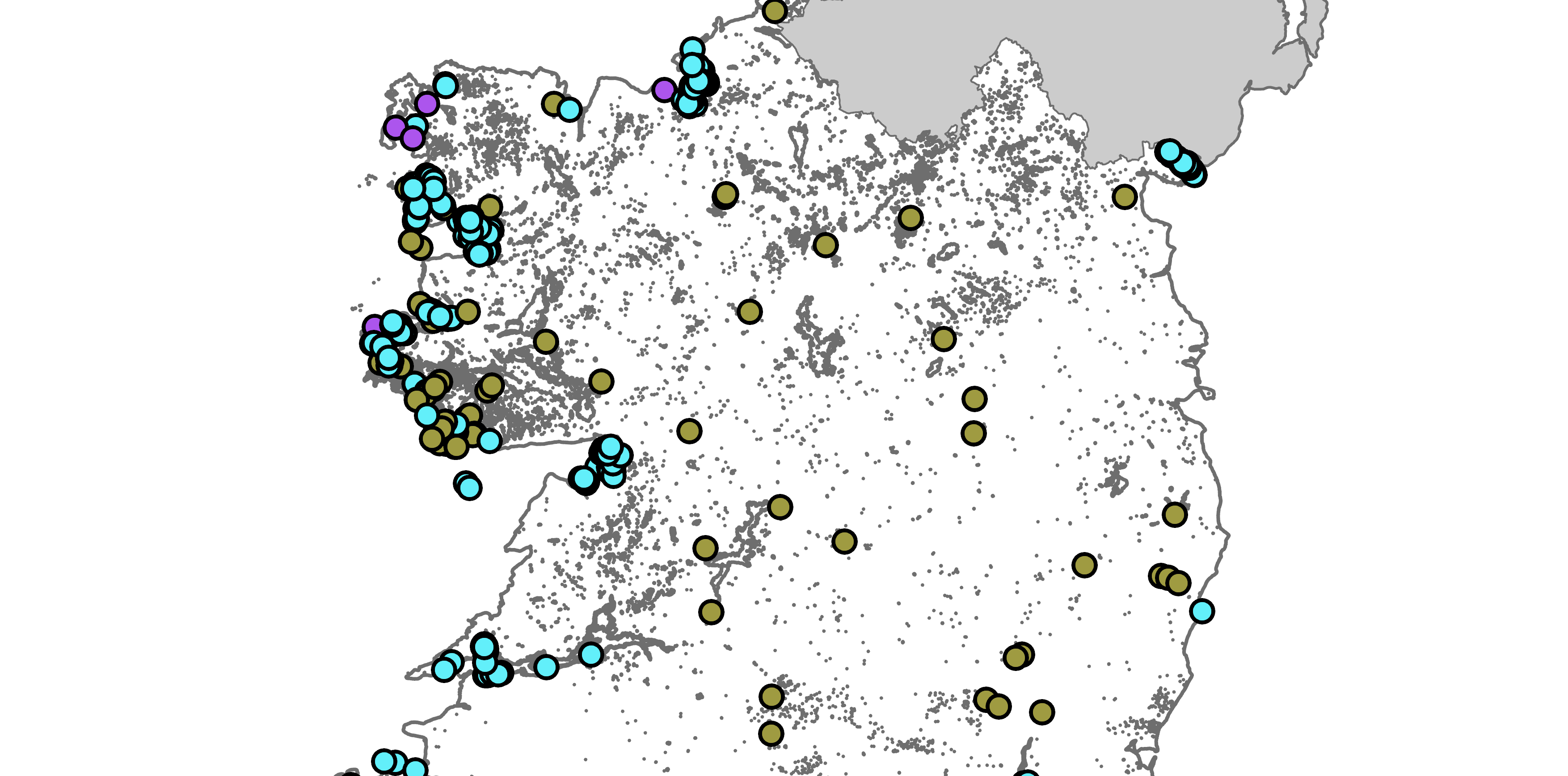Opportunities in the bioeconomy
There are many feedstocks that may be used in the bioeconomy. Some may be purposely grown however many arise from streams that may be currently underutilised or even considered waste. These provide opportunities for both the producers of these feedstocks, as well as new and existing businesses who may use them for new business opportunities. In these maps we will highlight some of the resources currently used, their current production levels and what they might be used for.
Two of the maps feature straw and forestry, both of which fall into the category of lignocellulosic biomass. Lignocellulosic biomass is a very interesting feedstock when considering the development of rural bioeconomy value chains. Lignocellulosic biomass contains sugars (5-carbon and 6-carbon) and is also rich in the natural polymer lignin. Almost 2 million tonnes (dry matter) of straw and forestry residues have been identified in Ireland in total. The straw map shows that the main arisings occur in the East (Meath and Kildare), South East (Carlow, Kilkenny, Wexford and Tipperary) and South (Cork). Large volumes of forestry residues are found in Cork, Galway, Limerick and Wicklow. One of the primary areas of application for lignocellulosic feedstocks within the bioeconomy, has been for the development of bioenergy and more recently advanced biofuel, bioethanol which can be used as a transport fuel when blended with gasoline. The scale-up of so-called “advanced biofuels”, including second-generation cellulosic ethanol has become a growing priority for EU policy makers in recent years, as they look to prioritize biofuels which show a clear reduction in greenhouse gases, and do not compete with food production and existing land use. In order to meet this demand, a growing number of cellulosic ethanol production plants are now being scaled across Europe including plants in Italy, Germany, Slovakia and Romania. Many companies are looking already looking beyond energy applications, which represent a relatively low value application, and are instead focusing their efforts on evaluating the potential of lignocellulosic biomass for higher value biobased materials, such as chemicals or polymers. Companies such as Natureworks, Global BioEnergies and GF Biochemicals are already working towards the development of biobased chemicals from residual lignocellulosic feedstocks. The BBI JU SWEETWOODS[1] and Optisochem[2] projects are currently scaling up the production of chemicals such as lactic acid and bio-Isobutene in Estonia and Germany based on hardwood and straw respectively. These versatile chemical building blocks can have applications in lubricants, cosmetics, solvents, plastics and other bulk products. The BIO4products[3] initiative is looking at the conversion of lignocellulose into ingredients for everyday building products including resins, insulation foams and modified wood. Companies in Scandanvia, such as Borregaard and Metsa are leaders in development of materials such as composites and nanocellulose from lignocellulosic feedstocks. While the lignin content of lignocellulose, has a highly energetic chemistry due to its macromolecular structure and can easily be combusted to produce energy, its aromatic phenol monomers are a suitable source for generating high value-added chemical compounds that can be used for the manufacturing of bioplastics and bioadhesives[4]. This abundant and renewable material can displace many other products which are currently based on finite resources. The BBI JU Libre[5] project is evaluating the potential of lignin to develop renewable carbon fibres for use in composites, while researchers at Wageningen University are even piloting the use of lignin as a renewable replacement material for bitumen-dependent asphalt in road surfacing[6].
A forecast of wood resources, created by a collaborative effort involving Coillte, the Forest Service of the Department of Agriculture, Food and the Marine, the Northern Ireland Forest Service, Teagasc, the Irish Farmers Association, the Irish Timber Council, and the Irish Timber Growers Association, is published by COFORD. The GIS forecast generates user defined spatial forecasts up to 2035 for private and Coillte forests. The GIS Portal, which was developed by the Information Management and Technology Division (IMT) of the Department of Agriculture, Food and the Marine, may be accessed through DAFM’s Forest Service web page here. The portal facilitates the dissemination of comprehensive volume forecast information on the national forest estate in an accessible, reproducible and transparent way. The accompanying COFORD All Ireland Roundwood Production Forecast 2016- 2035 is available through the COFORD link on the Department’s website
With a total maritime area ten times the size of Irelands land mass, Ireland’s aquatic bioresource holds great potential to be maximized through Ireland’s developing bioeconomy. The aquatic biomass map provides an overview of the main areas of arisings for finfish, seaweed and shellfish across Ireland. Most of this, unsurprisingly is located in coastal and port regions. These feedstocks and their residual streams could be used to develop new coastal bioeconomy value chains. Fish processing, for example, can generate between 20 and 80% by-products depending on the process used. From this fish waste, proteins can be extracted which contain bioactive peptides,some of which have therapeutic properties, as well as fish oil consisting of omega 3 fatty acids EPA and DHA which can be used in functional food products. Additionally, fish skin is a good source for collagen and gelatine which are currently used in the food, cosmetic, and biomedical industries. BioMarine Ingredients Ireland[7] is currently operating a demonstration marine biorefinery in Co. Monaghan and has become a world leader in the biorefining of fish and fish wastes into some of these products and ingredients. Seaweeds meanwhile, are a rich source of polysaccharides and oligosaccharides which have potential in high value therapeutic applications due to their bioactivity, including fucoidan, fucoxanthin and fucan from brown algae. Other extracted compounds —including phenolic compounds, pigments, PUFA, sterols, proteins, peptides, and mycosporine-like amino acid (MAA)— can be used as active ingredients in cosmetic products. The MACROCASCADE[8] project is an example of a cascading biorefinery approach to seaweeds, including red seaweed and sugar kelp, to produce ingredients for feed, pharma, nutraceutal and biomaterial applications.
Ireland’s bioresources clearly hold enormous potential to be converted into everyday products, many of which are dependent on fossil or other finite resources. Work is ongoing through CircBio, Teagasc, BiOrbic and others to better understand; just how much of this biomass can be harvested sustainably, which new value chains hold the greatest potential for Ireland (taking into account a balance between the three pillars of sustainability) and which collaborations will be necessary to bring these value chains to fruition.
Contributors:
- Zeba Haseeb, Dr Helena McMahon, Dr Jennifer Attard & James Gaffey
- Circular Bioeconomy Research Group (CIRCBIO)
- Shannon Applied Biotechnology Centre
- Institute of Technology Tralee
- Ben Dallaghan
- Economic and Strategic Services Unit,
- Bord Iascaigh Mhara
- Tony Quinn
- Research & CODEX Division
- Department of Agriculture, Food and the Marine
- Dr Niall Farrelly
- Forestry Development Unit
- Teagasc Athenry esearch Centre
- Dr Jesko Zimmermann
- Department of Agrifood Business and Spatial Analysis
- Teagasc Ashtown Research Centre
[1] SWEETWOODS (2020) https://sweetwoods.eu/
[2] Optisochem (2020) http://optisochem.eu/
[3] BIO4Products (2020) https://bio4products.eu/
[4] Ahorsu, R., Medina, F., Constantí, M. (2018) Significance and Challenges of Biomass as a Suitable
Feedstock for Bioenergy and Biochemical Production: A Review. Energies. 11 (3366).
[5] LIBRE (2020) http://libre2020.eu/
[6] Gosselink, R. (2019) Lignin Use in Asphalt https://edepot.wur.nl/496710
[7] BIOMARINE INGREDIENTS IRELAND (2020) http://www.biomarine.ie/
[8] MACROCASCADE (2020) https://www.macrocascade.eu/



Comments are closed